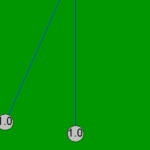Unified Payment Interface (UPI)- Unique App for Payments
Unified Payment Interface (UPI) is an exceptional app that allows you to transfer funds from your account to the account of a payee by entering the identification code of the recipient and a PIN. It is developed by National Payments Corporation of India (NPCI). It is an organization under Reserve Bank Of India (RBI) for developing indigenous infrastructure for promotion of retail payments in a cost effective manner. The application works in a smartphone and the uniqueness of the Unified Payment Interface app is that you need not provide either details of your bank account or that of the payee.
Difference between UPI and mobile wallet
The mobile wallet, for example PayTM , is a closed wallet. For a transaction to happen both payer and payee have to be registered with the same wallet service provider. Unlike in the case of wallets, the UPI app does not even need to be that of your bank. Thus, it gives absolute freedom to the customer to opt for the most convenient and simple app from many apps that will be promoted by different banks. UPI app is interoperable among banks. UPI would thus provide access to all banks. But, as of now, many banks have said no to mobile wallets for various reasons.
How does the transaction happen?
Customer of a bank can download the UPI app of any bank. Registration is mandatory for using the facility. On registration, a unique virtual identity is created. On generating a transfer request, the system identifies the underlying details from the virtual ID and effects the transfer.
What are the benefits of UPI?
1. It is easier as banks can utilize Aadhar based biometric utility to ensure secure authentication without cards
2. It is safer as one need not share ones account details with others.
3. Being indigenous and industrywide protocol, the cost of transaction is lower
4. Both payer and payee can initiate a transaction.
John C S
Do flat fishes have two eyes on one side?









